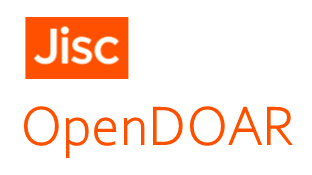Artículo
 The analysis of linguistic variation in Translation Studies. A proposal for classifying translational phenomena between source text and target text
The analysis of linguistic variation in Translation Studies. A proposal for classifying translational phenomena between source text and target text
| Autor/es | Rey Quesada, Santiago del





 |
| Departamento | Universidad de Sevilla. Departamento de Lengua Española, Lingüística y Teoría de la Literatura |
| Fecha de publicación | 2020 |
| Fecha de depósito | 2020-06-01 |
| Publicado en |
|
| Resumen | This paper addresses the study of variation in translated texts from
a theoretical-methodological perspective. The first section focuses on the
determining factors affecting diasystematic variation in the variational ... This paper addresses the study of variation in translated texts from a theoretical-methodological perspective. The first section focuses on the determining factors affecting diasystematic variation in the variational space of languages, a concept emerging from the field of German variational linguistics, where I refer to the domains of communicative immediacy and communicative distance, two concepts essential for understanding the classification proposed in the following pages. The second section is devoted to the type that I have called contact-based variation, defining language variants attributable to the situation of contact in which all translations are produced. The third section briefly covers what I have termed gradational variation, i.e. the existence of forms that are intensified or attenuated with respect to others. The fourth section describes how the three types of variation interrelate in target texts and establishes a typology of phenomena aimed at explaining variants in translated texts, revolving around the concept of interference. Lastly, the viability of this proposal for analysing variants in the field of descriptive, historical, and applied linguistics is discussed En este artículo me intereso por el estudio de la variación en los textos traducidos desde una perspectiva teórico-metodológica. En un primer epígrafe, discuto los condicionantes que afectan a la variación diasistemática en ... En este artículo me intereso por el estudio de la variación en los textos traducidos desde una perspectiva teórico-metodológica. En un primer epígrafe, discuto los condicionantes que afectan a la variación diasistemática en el espacio variacional de las lenguas, concepto surgido en el ámbito de la lingüística de variedades alemana, y me refiero a los conceptos de ‘ámbito de la inmediatez’ y ‘ámbito de la distancia’ comunicativas, fundamentales para comprender la clasificación que propongo a lo largo de las siguientes páginas. En el segundo epígrafe, me centro en la variación basada en el contacto, es decir, la que explica las variantes de lengua atribuibles a la situación de contacto en que se desenvuelve toda traducción. En el tercer apartado, me refiero brevemente a la variación que denomino gradativa, que explica la existencia de formas intensificadas o atenuadas respecto de otras. En la cuarta sección, se verá cómo se interrelacionan los tres tipos de variación en los textos meta y se ofrece una tipología de fenómenos tendentes a explicar las variantes en textos traducidos, con foco en el concepto de interferencia. Por último, se discute la rentabilidad de esta propuesta para el análisis de variantes en el ámbito de la lingüística descriptiva, incluyendo la lingüística histórica, y de la lingüística aplicada |
| Identificador del proyecto | PGC2018-097823-B-I00
 |
| Cita | Rey Quesada, S.d. (2020). The analysis of linguistic variation in Translation Studies. A proposal for classifying translational phenomena between source text and target text. Hikma. Estudios de traducción, 19 (1), 209-237. |
| Ficheros | Tamaño | Formato | Ver | Descripción |
|---|---|---|---|---|
| Rey Quesada.pdf | 358.6Kb | Ver/ | ||
Este registro aparece en las siguientes colecciones
Este documento está protegido por los derechos de propiedad intelectual e industrial. Sin perjuicio de las exenciones legales existentes, queda prohibida su reproducción, distribución, comunicación pública o transformación sin la autorización del titular de los derechos, a menos que se indique lo contrario.
















 :
: 